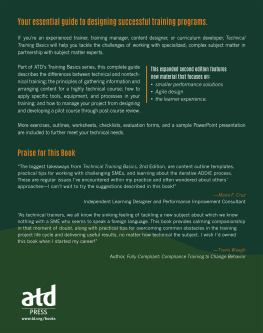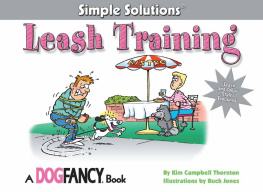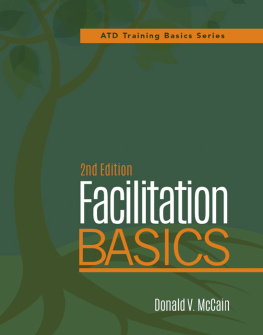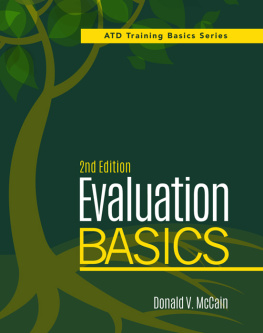ATDs Training Basics series recognizes and, in some ways, celebrates the fast-paced, ever-changing reality of organizations today. Jobs, roles, and expectations change quickly. One day you might be a network administrator or a process line manager, and the next day you might be asked to train 50 employees in basic computer skills or to instruct line workers in quality processes.
Where do you turn for help? The ATD Training Basics series is designed to be your one-stop solution. The series takes a minimalist approach to your learning curve dilemma and presents only the information you need to be successful. Each book in the series guides you through key aspects of training: giving presentations, making the transition to the role of trainer, designing and delivering training, and evaluating training. The books in the series also include some advanced skills, such as performance and basic business proficiencies.
The ATD Training Basics series is the perfect tool for training and performance professionals looking for easy-to-understand materials that will prepare nontrainers to take on a training role. In addition, this series is the consummate reference tool for any trainers bookshelf and a quick way to hone your existing skills.
Preface
When industrial accidents occur as a result of human error, it is only a matter of time before the inevitable question is asked: Where was the training?
In a world where things like safety, quality, and efficiency are essential, we cannot afford ineffective, inefficient technical training. Technical training must be done, and it must be done well in todays business environment. Yet there are few resources available that specifically discuss how to effectively develop technical training.
Technical training development is a complex, challenging, unique, misunderstood, and sometimes frustrating process. As a course developer without specific expertise in the content itself, your job is especially tricky: You must complete all the regular tasks of developing courseware, but you must do this using words and concepts you dont fully understand.
I have worked with contract course developers from many different levels, including developers who were paid a premium for their impressive (on paper, at least) backgrounds. But what I have learned is that experience isnt always the biggest success factor for putting together a technical course. Some of the most expensive, experienced developers have let me downcalling me one week before an assignment is due to tell me that the project is just too complicated for them, that they have never had to do anything so difficult before, and that they wont be able to finish. Conversely, I have worked with developers fresh out of university who demonstrated promising skills and, with a little practice, were able to outperform more experienced individuals.
Ive noticed that the technical developers who are successful exhibit some of the same characteristics and approaches. That is what this book is about.
Technical training requires different tactics to develop than nontechnical training. One of the biggest success factors is the ability to work effectively with your subject matter expert (SME). In addition, launching the project the right way, understanding different ways technical courses can be organized, finding the right information, designing technical exercises, and piloting a course with a SME or instructor are all important. This book is intended to discuss these things and morein a specific and readable way.
What This Book Does Not Cover
If you have never designed a training class before, this book is not for you. This book covers how to apply basic instructional design concepts to a technical training project.
Primary Audience
The primary audience of this book is anyone who develops technical training with the help of a SME. This includes training developers, instructional designers, curriculum developers, technical writers, training managers, training coordinators, content designers, and training specialists, among others.
SMEs who develop their own technical training will still be able to pull concepts from this book, but the bulk of the writing is geared toward developers who are working with a SME.
How This Book Is Organized
This book provides specific ideas, tips, and strategies to effectively and efficiently develop technical training, from the beginning of the project all the way through the pilot course and postcourse review. It is loosely organized according to the course development process.
: The Technical Training Enigma describes technical training and discusses some of the differences between technical and nontechnical training. The technical organization is briefly explored.
: Effective Technical Training covers quality measuresbacked by research specifically on technical trainingthat you can include in your technical learning programs.
: The Successful Development Team covers the roles needed for technical course development and the characteristics of an effective developer and a SME.
: Technical Training Development Strategies discusses different learning development methodologies along with when you might use each.
: Beginning the Technical Training Project discusses aspects related to the initial course design meeting, including why the meeting is important, who should attend, important questions to ask, and what should be accomplished.
: Targeting the Content describes how to use SMART objectives and a content analysis process to create targeted technical content.
: Arranging a Technical Curriculum examines various options available for arranging a technical curriculum. It also describes how to create a course design document.










